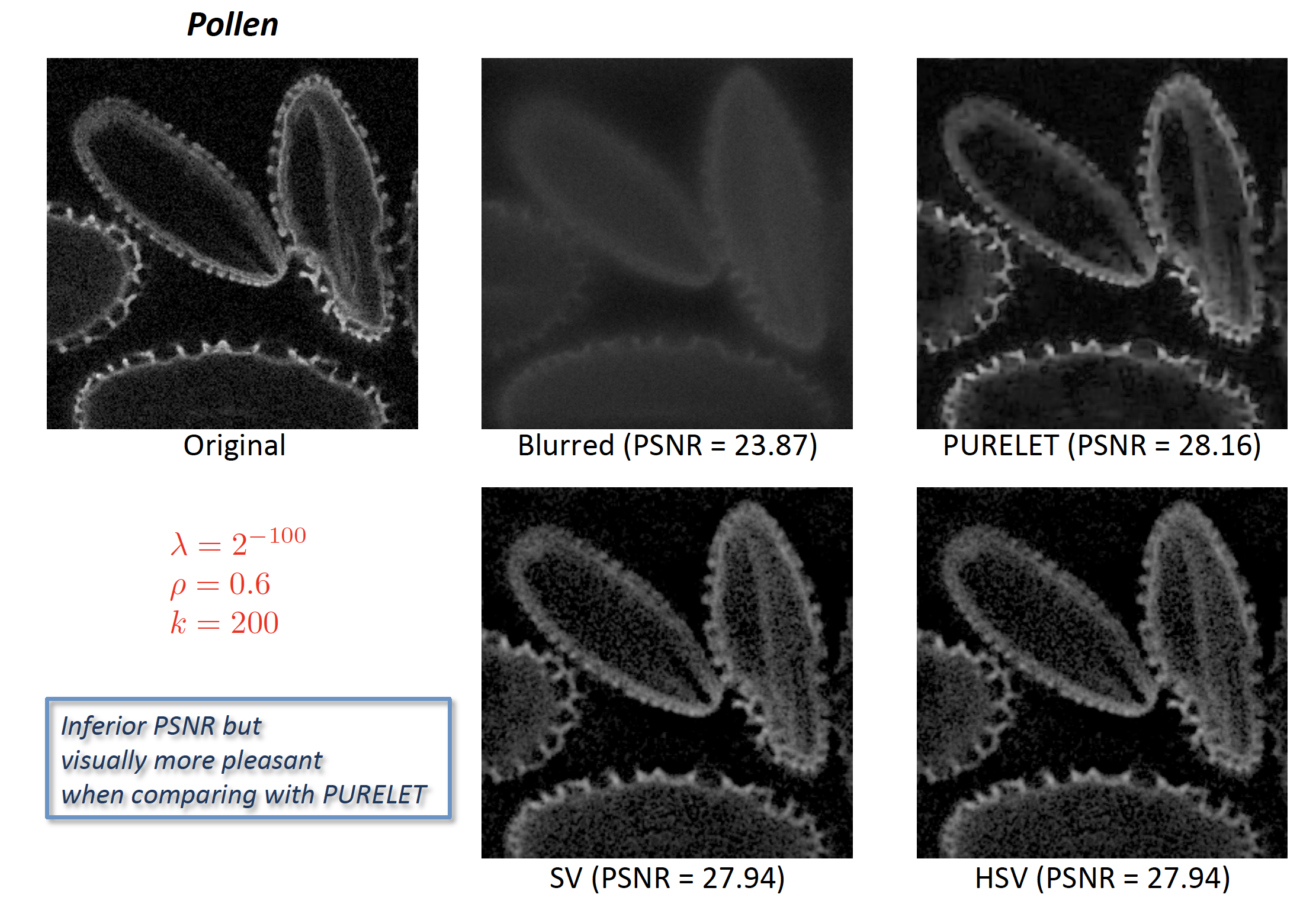Section: New Results
Algorithms for deconvolving and denoising fluorescence 2D-3D microsocopy images
Participants : Hoai-Nam Nguyen, Charles Kervrann.
In this work, we proposed a restoration method for 2D and 3D fluorescence imaging using a novel family of convex regularizers. The proposed regularization functionals are based on the concept of sparse variation, that consists in penalizing jointly the image intensity and gradient at each pixel to favor the co-localization of non-zero intensities and gradients, by considering eventually higher-order differentiation operators. By construction, these regularizers possess interesting mathematical properties, namely convexity, invariance to scale, rotation, and translation as the well-known total variation regularization approach. It enables therefore to design efficient algorithms to solve the underlying deconvolution problem, which is in general large-scale in the context of fluorescence microscopy. We reformulated denoising or deconvolution (given the point spread function) as a minimization problem of a convex energy function composed of a quadratic data fidelity term and a sparse-variation-based regularity term under the constraint of positivity and maximum intensity value. In order to minimize this energy, we considered a primal-dual (proximal) algorithm based on the full splitting technique, which only involves first-order operators to cope with the large-scale nature of the problem. Experimental results on both 2D and 3D synthetic and real fluorescence images demonstrated that our method was able to produce very competitive deconvolution results, when compared to several competing methods such as the Schatten norm of the Hessian matrix, in terms of quantitative performance as well as visual quality and computational time. The method is able to process a image in 250 ms (in Matlab) with a non optimized implementation and can process 3D images in a few minutes (with no code optimization technique and multithreading).
Collaborators: Cyril Cauchois (Innopsys company).



